In 2008, I worked with experimental sound artist Mari Garrett to create a realization of her piece, “Pilgrimage to the sound — 2 (with yasujiro)”. The score requests that the performer follow each stroke of the kanji character that is on the grave of Japanese filmmaker Yasujiro Ozu.
In our realization, I played the contrabass, devising a system of how to translate the strokes of drawing the kanji by bowing the bass in a series of special ways that would represent the stroke order as well as the horizontal, vertical and diagonal orientation of the strokes. Mari poured water and oil-based paint into a basin and placed a device in the paint that was connected to my bass, so that the vibrations of the bass sounds would mix up the paint. In essence, we were attempting to turn the image of the kanji into a sound, and then back into a new image: a sound painting.
Here is the score (click to enlarge):
Here is a description of the performance procedure:

The fishing line is connected to a string on a contrabass. The string is bowed in a special way, such that each bow corresponds to the individual strokes of the kanji.


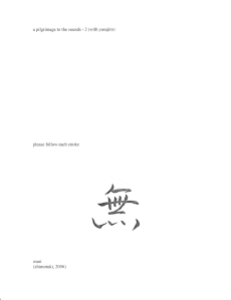
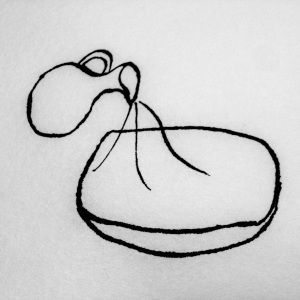

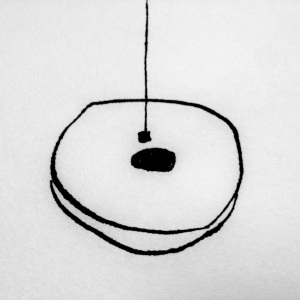

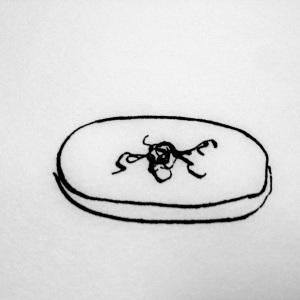
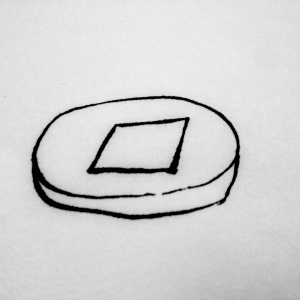
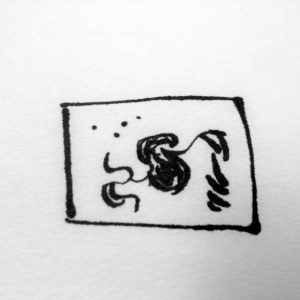
Thank you for the experimental work… “Here is one of them” (above)….very reminiscent of the work of the Spanish painter Joan Miro.
These works are approaching the idea of matter (material /paint) expressing the nature of sound (vibration/music), through the maker (musician/player) a collaboration with the resulting work displaying an outcome of honesty between initiator and the intended.